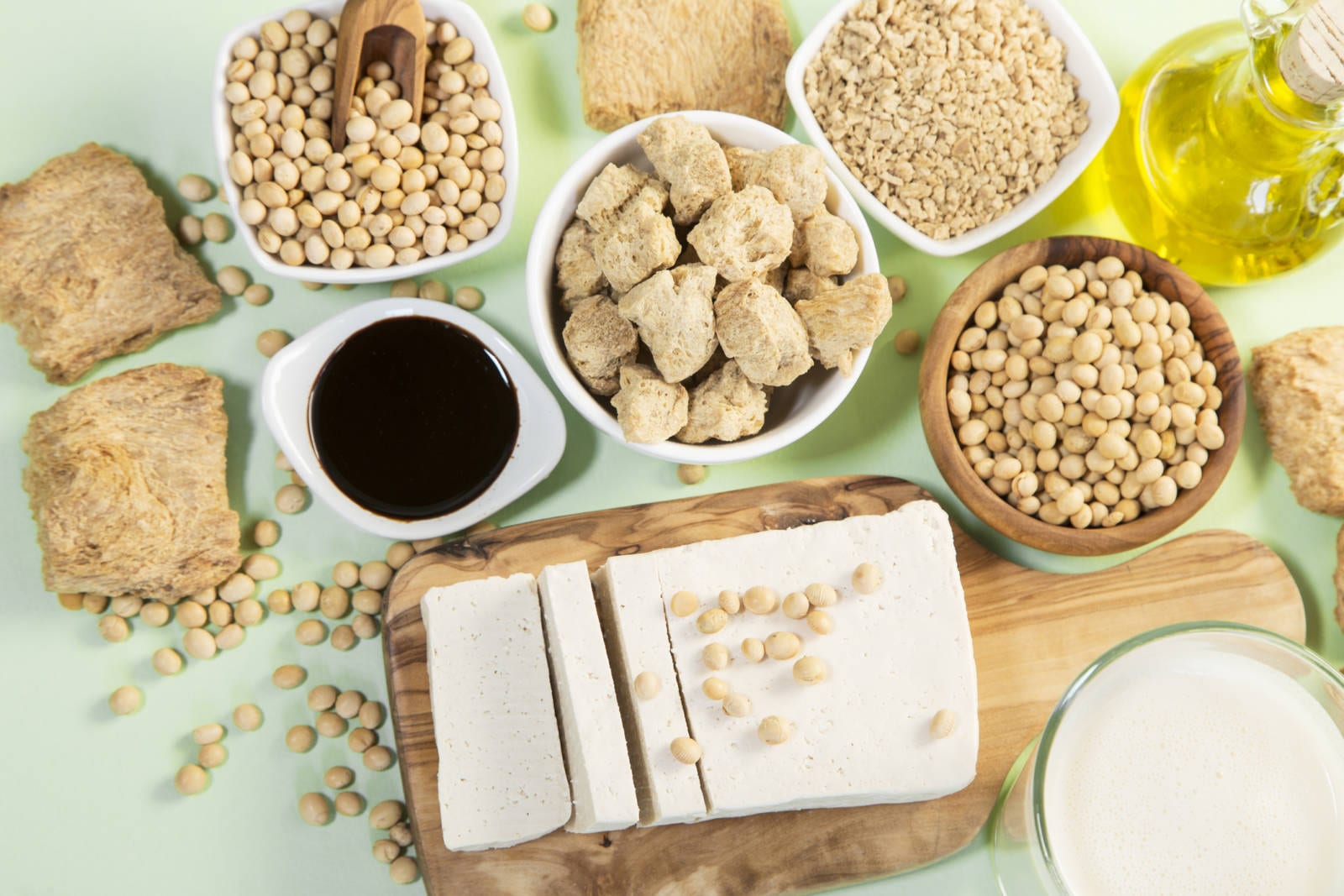The U.S. Soybean Export Council (USSEC) shares information about trends that create a demand for U.S.-grown soybeans. This is Part One of a two-part series on how soy meets anticipated global needs for protein in a sustainable way.
Whether consumers choose animal protein sources—such as beef, pork and chicken—or plant-based sources such as soyfoods, protein is a vital element of nutrition and a critical part of a balanced diet. Global events such as the COVID-19 outbreak underscore the interconnectedness of world populations, and the importance of meeting shared needs. Soyfoods play a pivotal part in the safe, reliable U.S. food chain that can help feed the world. “Choose U.S. Protein First,” a global initiative to increase consumption of U.S. proteins, demonstrates the quality and versatility of soy.
As the global population rises to an estimated nine billion people by 2050,[1] U.S.-grown soy can fulfill an essential role in feeding the world. Soyfoods also satisfy the current consumer trend of exploring plant-based meat alternatives, and fulfill worldwide nutrition needs for high-quality protein. In addition, U.S.-grown soybeans contribute to the protein picture by providing a primary source of feed for animal agriculture.
How soy fits into the protein picture
U.S. soybeans play an important role in global food security by providing reliable supplies of high-quality protein. USSEC works in partnership with other organizations that have the shared goal of encouraging collaboration between plant protein providers and the animal agriculture segment to benefit the world’s population by meeting nutrition needs in a way that is mindful of the health of the planet. For example, farmers across the U.S. are working to reduce the impact of farming on the environment. Soil on farms across the country store 100 more carbon than the U.S. uses each year.[2] Soybean farmers employ sustainable practices, including reduced tillage, crop rotation and water and nutrient management. [3]The U.S. Soy Sustainability Assurance Protocol (SSAP) documents sustainable soybean production.[4]
U.S.-grown soybeans are integral to increasing the consumption of U.S. proteins
Regarding soy protein, Mark Messina, Ph.D., M.S., executive director of the Soy Nutrition Institute, says, “As a protein source, soybeans are remarkably versatile, functioning as a source of both feed and food. It is not surprising that increasing numbers of consumers are incorporating soy protein into their diet.”
U.S. soybean growers make a meaningful contribution to the world’s food supply. They provide both a reliable source of soybeans required for animal feed for livestock, and soybeans used to produce soyfoods for plant protein consumers. Soybeans currently are the second-largest crop grown on U.S. soil.[5] Approximately 80 million acres of soybeans are distributed among widespread growing regions throughout the country.[6]
Soyfoods address today’s trends and tomorrow’s food supply
By 2030, consumer interest in plant-based meat alternatives and protein-rich diets is predicted to grow to an $85 billion market, up from $4.6 billion in 2018.[7] Meat consumption, too, is rising globally, and is anticipated to continue its upward growth through 2030.[8]
Soyfoods are a protein powerhouse
The protein quality of soybeans is equivalent to animal protein. Soy is a cholesterol-free protein that provides all the essential amino acids in amounts required to meet the nutritional needs of children and adults.[9] In addition, soymilk is a recognized dairy alternative plant-based milk. According to the 2015-2020 Dietary Guidelines for Americans, soy beverages fortified with calcium and vitamins A and D are similar to milk, based on their nutrient composition.[10]
[1] UN Department of Economic and Social Affairs. “World Population Prospects: The 2017 Revision”. https://www.un.org/development/desa/en/news/population/world-population-prospects-2017.html. 2017.
[2] Second State of the Carbon Cycle Report (SOCCR2): A Sustained Assessment Report, US Environmental Protection Agency. 2019. https://carbon2018.globalchange.gov/.
[3] “Soil Tillage and Crop Rotation.” https://www.ers.usda.gov/topics/farm-practices-management/crop-livestock-practices/soil-tillage-and-crop-rotation/. United States Department of Agriculture Economic Research Service. April 4, 2017.
[4] U.S. Soybean Sustainability Assurance Protocol.” https://ussec.org/wp-content/uploads/2017/11/20180416-U.S.-Soy-Sustainability-Assurance-Protocol-low-res.pdf. April 2018.
[5] “National Agricultural Statistics Service.” https://downloads.usda.library.cornell.edu/usda-esmis/files/j098zb09z/0k225n39n/jw827p632/acrg0619.pdf. United States Department of Agriculture. June 28, 2019.
[6] “National Agricultural Statistics Service.” https://downloads.usda.library.cornell.edu/usda-esmis/files/j098zb09z/0k225n39n/jw827p632/acrg0619.pdf. United States Department of Agriculture. June 28, 2019.
[7] UBS. “The Food Revolution”. file:///C:/Users/ptazalla/Downloads/The_Food_Revolution_July2019_En.pdf. Page 67. July 2019.
[8] Food and Agriculture Organization. “World agriculture: towards 2015/2030”. Livestock commodities. http://www.fao.org/3/y4252e/y4252e05b.htm#P3_3.
[9] Hughes GJ, Ryan DJ, Mukherjea R, Schasteen CS. “Protein Digestibility-Corrected Amino Acid Scores (PDCAAS) for Soy Protein Isolates and Concentrate: Criteria for Evaluation.” Journal of Agriculture and Food Chemistry. 2011 December 14;59(23):12707-12. https://www.ncbi.nlm.nih.gov/pubmed/22017752.
[10] “2015-2020 Dietary Guidelines for Americans.” www.dietaryguidelines.gov/current-dietary-guidelines/2015-2020-dietary-guidelines. United States Department of Agriculture.
